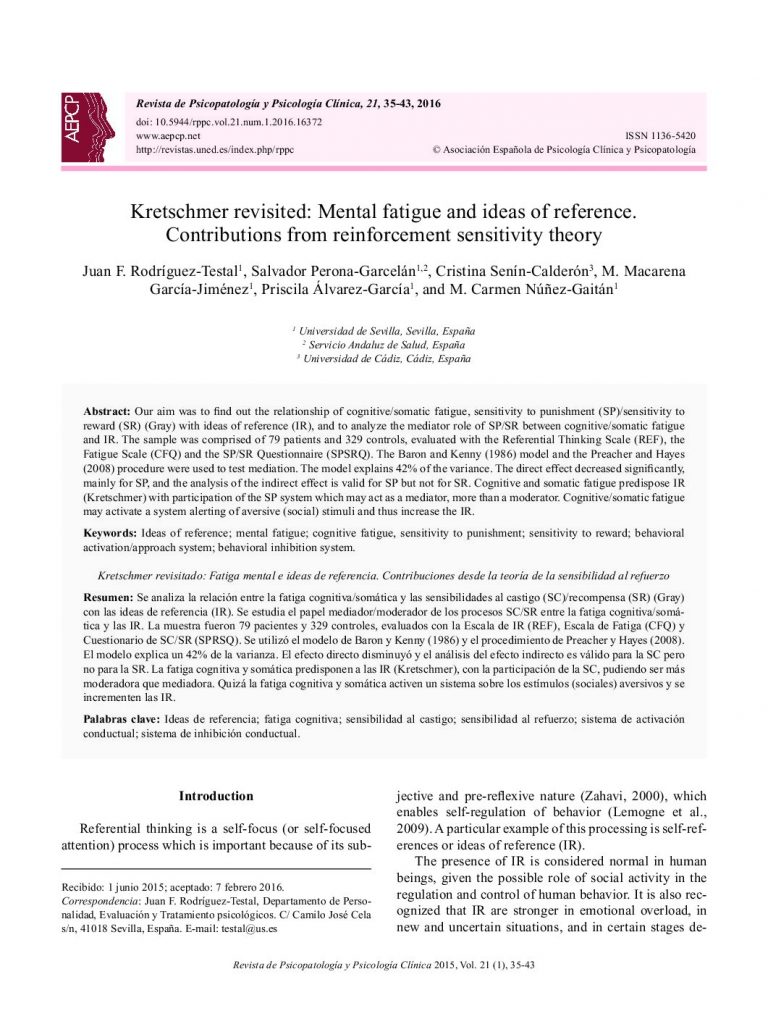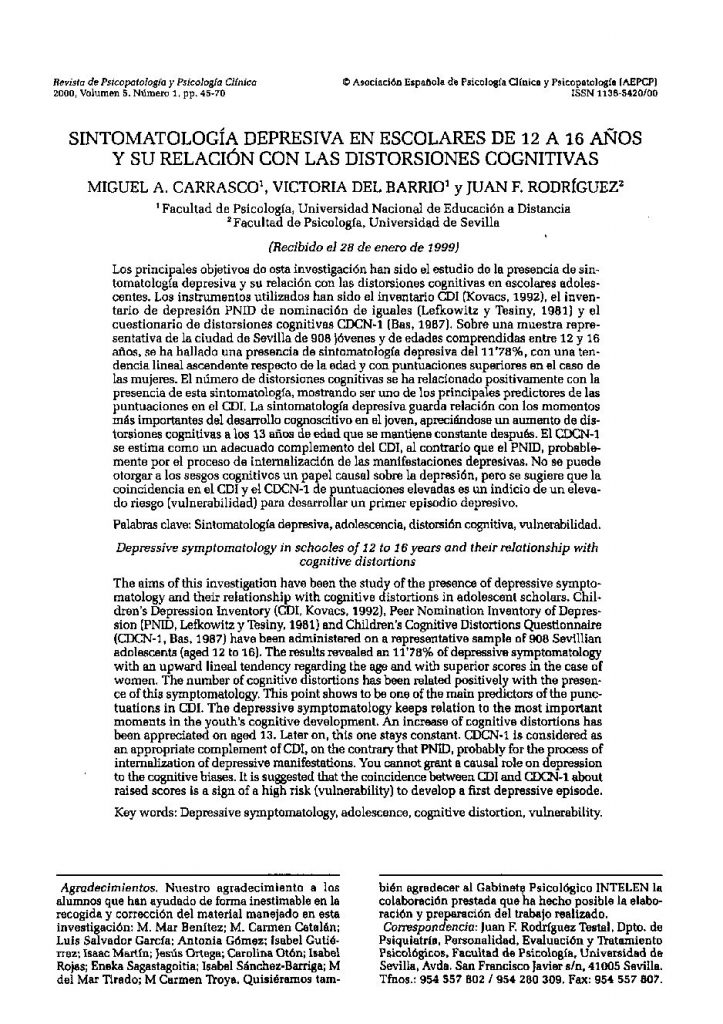Kretschmer revisited: Mental fatigue and ideas of reference: Contributions from Reinforcement Sensitivity Theory.

- Afrontamiento y motivación como predictores del bienestar subjetivo y psicológico.
- Influencia de la sensibilidad a la ansiedad en una intervención psicológica para dejar de fumar.
- Características individuales y familiares de los adolescentes inmersos en violencia filio-parental: la agresividad física, la cohesión familiar y el conflicto interparental como variables explicativas.
- Kretschmer revisited: Mental fatigue and ideas of reference: Contributions from Reinforcement Sensitivity Theory.
- ¿Que pueden aportar actualmente las nuevas tecnologías al trastorno bipolar?.
- El tratamiento psicológico de la tricotilomanía: Un estudio de caso.
- Hipnoterapia y terapia breve centrada en soluciones aplicadas a síntomas por abuso sexual infantil: Un estudio de caso.
Our aim was to find out the relationship of cognitive/somatic fatigue, sensitivity to punishment (SP)/sensitivity to reward (SR) (Gray) with ideas of reference (IR), and to analyze the mediator role of SP/SR between cognitive/somatic fatigue and IR. The sample was comprised of 79 patients and 329 controls, evaluated with the Referential Thinking Scale (REF), the Fatigue Scale (CFQ) and the SP/SR Questionnaire (SPSRQ). The Baron and Kenny (1986) model and the Preacher and Hayes (2008) procedure were used to test mediation. The model explains 42% of the variance. The direct effect decreased significantly, mainly for SP, and the analysis of the indirect effect is valid for SP but not for SR. Cognitive and somatic fatigue predispose IR (Kretschmer) with participation of the SP system which may act as a mediator, more than a moderator. Cognitive/somatic fatigue may activate a system alerting of aversive (social) stimuli and thus increase the IR.
Se analiza la relación entre la fatiga cognitiva/somática y las sensibilidades al castigo (SC)/recompensa (SR) (Gray) con las ideas de referencia (IR). Se estudia el papel mediador/moderador de los procesos SC/SR entre la fatiga cognitiva/somá- tica y las IR. La muestra fueron 79 pacientes y 329 controles, evaluados con la Escala de IR (REF), Escala de Fatiga (CFQ) y Cuestionario de SC/SR (SPRSQ). Se utilizó el modelo de Baron y Kenny (1986) y el procedimiento de Preacher y Hayes (2008). El modelo explica un 42% de la varianza. El efecto directo disminuyó y el análisis del efecto indirecto es válido para la SC pero no para la SR. La fatiga cognitiva y somática predisponen a las IR (Kretschmer), con la participación de la SC, pudiendo ser más moderadora que mediadora. Quizá la fatiga cognitiva y somática activen un sistema sobre los estímulos (sociales) aversivos y se incrementen las IR.




